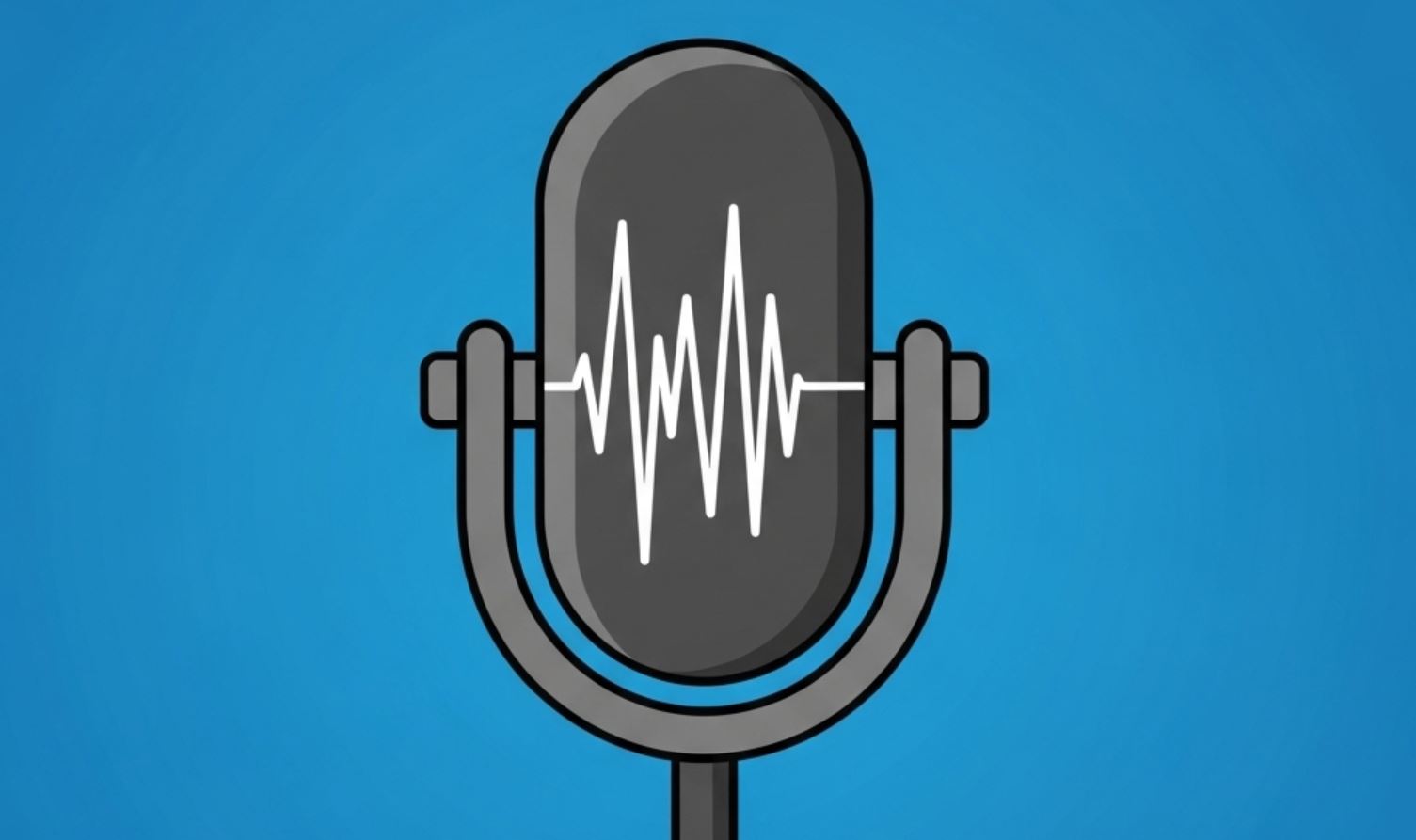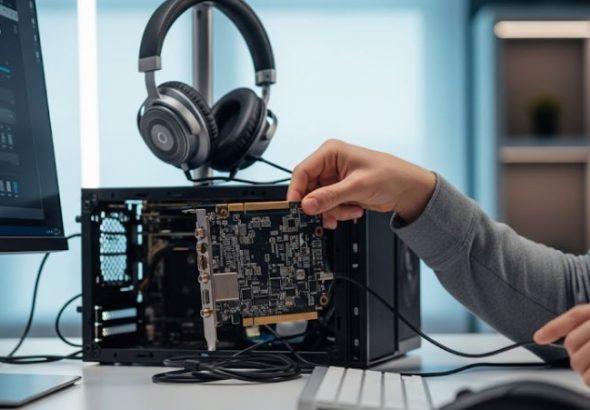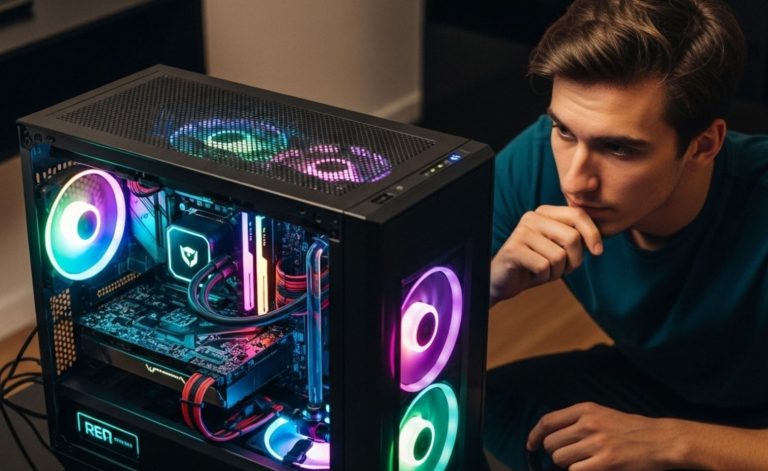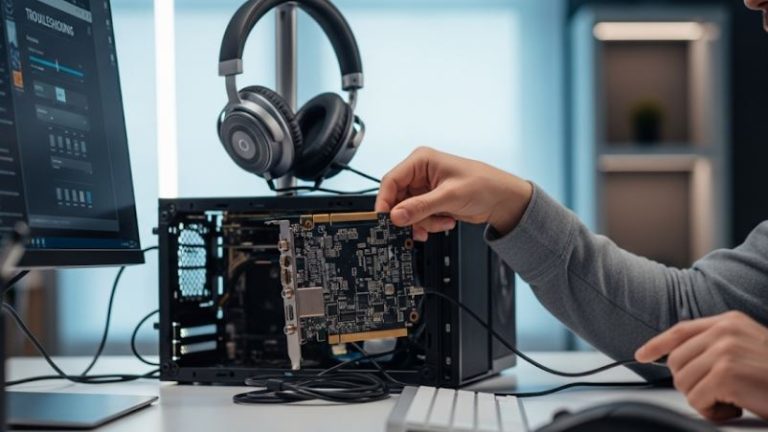
Imagine this common scenario: you’re in a café, a shop, or watching a movie, and a captivating melody drifts into your ears. It’s a song you’ve never heard before, or perhaps one that has been lingering on the edge of your memory, and you desperately want to know its name. Just a decade or two ago, this might have led to a frustrating, often fruitless search. Today, however, the answer is likely just a tap away on your smartphone. 🎵 Sound-based music recognition applications have revolutionized how we discover and interact with music, transforming fleeting auditory moments into lasting musical connections.
These ingenious pieces of software, often referred to simply as „song finders,” possess the almost magical ability to identify a song from a short audio snippet captured by your device’s microphone. From bustling public spaces to the quiet of your living room, these apps can pick out a tune amidst background noise and, within seconds, present you with its title, artist, album, and often a plethora of related information.
The Core Technology: How Do They Actually Hear and Understand? ⚙️
The ability of an app to „listen” to a piece of music and identify it is not magic, but a remarkable feat of digital signal processing and clever algorithm design. The underlying process can generally be broken down into several key stages: audio capture and preprocessing, acoustic fingerprinting, database matching, and result delivery.
1. Audio Input and Preprocessing 🔊
It all begins when you activate the app and it starts listening. Your device’s microphone captures a short segment of the ambient sound – ideally, the music you want to identify. This raw audio is an analog waveform, which needs to be converted into a digital format for the app to process.
Once digitized, the audio often undergoes some preprocessing. This can include:
- Noise Reduction: Algorithms may attempt to filter out or reduce the impact of background noise, such_as conversations, traffic sounds, or other ambient interference. The effectiveness of this step is crucial for recognition accuracy in real-world environments.
- Normalization: The amplitude of the audio signal might be adjusted to a standard level to ensure consistency in the subsequent processing stages.
- Resampling: The audio might be resampled to a specific sampling rate that the recognition algorithm is optimized for.
The goal of preprocessing is to clean up the signal and prepare it for the most critical step: creating an acoustic fingerprint.
2. Acoustic Fingerprinting: The Unique Signature of a Song 💡
This is where the true „brains” of the operation lie. Unlike human fingerprints, an acoustic fingerprint (also known as an audio fingerprint) isn’t a direct recording of the song snippet. Storing and comparing entire audio clips would be incredibly inefficient and require massive storage and bandwidth. Instead, the app extracts unique, characteristic features from the audio to create a compact digital signature – the fingerprint.
The process of generating an acoustic fingerprint is designed to be:
- Robust: The fingerprint should be relatively insensitive to noise, compression artifacts, equalization changes, and slight variations in playback speed. It needs to identify the same song even if the captured audio quality isn’t perfect or if it’s a live version (though live versions can be more challenging).
- Discriminative: Fingerprints of different songs must be distinctly different to avoid misidentification.
- Compact: The fingerprint should be much smaller in size than the original audio data to allow for efficient storage and fast searching in a massive database.
- Scalable: The fingerprinting algorithm must be efficient enough to be generated quickly on a mobile device and to allow for searching through databases containing tens of millions of songs.
While specific algorithms are often proprietary secrets of the companies that develop them, the general approach often involves analyzing the audio in the time-frequency domain. This is commonly done by:
- Creating a Spectrogram: The audio signal is broken down into short, overlapping frames. For each frame, a Fast Fourier Transform (FFT) is applied to determine the intensity of different frequencies present in that frame. Plotting these frequencies over time creates a spectrogram – a visual representation of the sound’s spectrum.
- Identifying Salient Features: Instead of using the entire spectrogram (which is still a lot of data), algorithms look for prominent features or „landmarks.” These could be peaks in energy at specific frequencies, the onset of notes, or characteristic changes in the spectral content. For example, some algorithms might identify pairs or „constellations” of these peak points in the spectrogram (e.g., an anchor point and a target zone of subsequent points). The time difference between these points and their frequencies are then used to create hash values.
- Hashing: These extracted features (like the relationships between spectrogram peaks) are then converted into a series of numerical values or hashes. A hash is a smaller, fixed-size representation of a larger piece of data. The sequence of these hashes forms the acoustic fingerprint for the captured audio snippet.
One of the pioneering concepts in this area, often associated with Shazam’s technology, involves identifying these peaks in the spectrogram and then creating hashes based on pairs (or sometimes triplets or more) of these peaks. For example, a hash might be formed from the frequency of peak A, the frequency of peak B, and the time difference between A and B. This creates a robust signature that is less affected by noise which might obscure some peaks but not all, and not the fundamental relationships between the remaining prominent ones.
3. Database Matching: Finding the Needle in the Haystack 🌍
Once the app has generated an acoustic fingerprint from the audio it „heard,” this fingerprint is sent to a server. This server hosts a colossal database containing the pre-computed acoustic fingerprints of millions upon millions of songs. Each fingerprint in the database is linked to metadata about the song: its title, artist, album, release year, genre, album art, and often links to streaming services.
The app’s generated fingerprint is then compared against this massive library. This isn’t a simple linear search, which would be far too slow. The databases are highly optimized, using sophisticated indexing techniques (similar to how search engines index web pages) to allow for incredibly fast lookups. The matching algorithms are designed to find the database fingerprint that most closely resembles the query fingerprint, even if there are some differences due to noise or variations in the captured audio.
The system often looks for a significant number of matching hash values between the query fingerprint and a fingerprint in the database. If a statistically significant match is found with high confidence, the song is considered identified.
4. Result Delivery 📱
If a match is found, the server sends the corresponding song metadata back to the app on your device. The app then displays this information – typically the song title, artist, and album art – usually within a few seconds of you initiating the search. Many apps also provide links to listen to the full song on streaming platforms like Spotify, Apple Music, or YouTube Music, view lyrics, watch music videos, or learn more about the artist.
If no match is found (perhaps the song isn’t in the database, the audio quality was too poor, or there was too much background noise), the app will typically inform the user that it couldn’t identify the song.
Key Players in the Music Recognition Arena
While the underlying technology shares common principles, several applications have become household names in sound-based music recognition.
Shazam
Perhaps the most iconic name in music recognition, Shazam was one of the earliest pioneers to bring this technology to the masses. Founded in 1999 and officially launched in the UK in 2002 as a dial-up service (users would dial „2580” and hold their phone to the music, receiving an SMS with the song title), Shazam evolved significantly with the advent of smartphones. The app became a massive hit on app stores, showcasing the power of mobile computing.
Shazam’s algorithm is renowned for its speed and accuracy, even in noisy environments. While the exact details are proprietary, it’s understood to be based on the aforementioned principles of spectrogram analysis and robust hashing of time-frequency landmarks. Apple acquired Shazam in 2018, further integrating its technology into the Apple ecosystem (e.g., through Siri and the Control Center on iOS). Despite the acquisition, Shazam remains available as a standalone app on both iOS and Android.
Shazam’s success has also paved the way for understanding user music discovery trends on a massive scale. The data collected (anonymously) about what songs people are „Shazaming” can be a powerful indicator of emerging hits.
SoundHound (and Houndify)
SoundHound is another major player, offering a compelling alternative to Shazam with some unique features. One of its standout capabilities is the ability to recognize songs from singing, humming, or even just spoken lyrics. If you only remember a tune or a few words, you can try humming it or saying the lyrics into SoundHound, and it will attempt to identify the song. This requires a different, arguably more complex, type of recognition algorithm that can match melodic contours or lyrical content against its database.
SoundHound also has its own advanced voice AI platform called Houndify, which powers its voice interaction capabilities. This allows for more conversational queries, like „What’s that song that goes ‘I’m a believer’?” The app provides lyrics that scroll in time with the music, direct links to music videos, and integration with various streaming services. SoundHound has emphasized its independence and its focus on voice-enabled AI solutions beyond just music recognition. Their technology also powers experiences in cars and other connected devices. SoundHound’s official website often highlights its AI prowess.
Google Assistant / Siri / Alexa (Built-in Capabilities)
Modern virtual assistants like Google Assistant (on Android and Google Home devices), Apple’s Siri (on iOS, macOS, and HomePod), and Amazon’s Alexa (on Echo devices) have integrated music recognition capabilities. You can typically ask, „Hey Google, what song is this?” or „Siri, name that tune,” and the assistant will listen and try to identify the music.
- Google Search / Assistant: Google leverages its vast search infrastructure and machine learning expertise for music recognition. Its feature is often very quick and accurate.
- Siri: Apple’s Siri has long used Shazam’s technology for its song identification, a capability that became even more deeply integrated after Apple’s acquisition of Shazam.
- Alexa: Amazon’s Alexa also offers music identification, often integrated with Amazon Music.
These built-in features offer convenience as they don’t require opening a separate app, making spontaneous music discovery even more seamless.
Other Notable Mentions
While Shazam and SoundHound dominate, other apps and services offer music recognition, sometimes with a niche focus:
- Musicxmatch: Primarily known as the world’s largest lyrics platform, Musixmatch also has a song identification feature, tying directly into its vast lyrics database.
- Beatfind: A simpler, lightweight music recognition app for Android that often gets praised for its clean interface.
The Evolution of Music Recognition 📈
The journey of music recognition technology is a testament to advancements in computing power, algorithm design, and the growth of the internet.
- Early Concepts & Gracenote (CDDB): Before real-time audio recognition, there was metadata lookup. When you inserted a CD into a computer, services like Gracenote (originally CDDB – Compact Disc Database) could identify the album and track names. This worked by creating a unique identifier based on the track lengths and order on the CD, not by listening to the audio itself.
- The Dawn of Acoustic Fingerprinting: The late 1990s and early 2000s saw the foundational research and development in acoustic fingerprinting. Companies like Shazam (initially based in London) and others began developing the core algorithms that could identify music from audio snippets.
- The Smartphone Revolution: The launch of the iPhone in 2007 and the subsequent rise of Android smartphones provided the perfect platform for music recognition apps. These devices had:
- Built-in microphones.
- Sufficient processing power for initial audio capture and some preprocessing.
- Constant internet connectivity to communicate with server-side databases.
- App stores for easy distribution and discovery. This era saw apps like Shazam and SoundHound become incredibly popular.
- Growing Databases and AI: As storage became cheaper and processing more powerful, the databases of fingerprinted songs grew exponentially, covering an ever-larger portion of the world’s music. Artificial Intelligence (AI) and Machine Learning (ML) began to play a more significant role in refining algorithms, improving noise resistance, and enabling new features like humming recognition. The vast amounts of data collected also helped to train and improve these AI models.
Beyond Song Identification: Additional Features and Uses
Modern music recognition apps are more than just song identifiers; they have evolved into comprehensive music discovery hubs. Common additional features include:
- Lyrics Display: Many apps show real-time, synchronized lyrics, allowing users to sing along or understand the song’s message better.
- Artist Biographies and Information: Access to detailed information about the artist, their discography, and related musicians.
- Concert Information and Ticketing: Some apps integrate with services to show upcoming concerts for the identified artist in the user’s area and provide links to purchase tickets.
- Integration with Streaming Services: Deep links to platforms like Spotify, Apple Music, YouTube Music, Deezer, etc., allowing users to immediately add the identified song to a playlist, listen to it in full, or explore more music from the artist.
- Social Sharing: Options to share discovered music with friends via social media, messaging apps, or email.
- Music Charts and Trends: Features that show what songs are currently trending or being „Shazamed” frequently, locally or globally.
- Offline Identification (Limited): Some apps can record a snippet offline and identify it later when an internet connection is available. Shazam, for instance, offers this.
- Visual Recognition: Some apps are experimenting with recognizing music or artist-related content from images or posters.
- Use in Professional Settings: DJs can use these apps to identify tracks they hear in other sets. Music supervisors for film and TV can use them to identify music for licensing. Radio stations can use the technology for tracking airplay.
Challenges and Limitations ❓
Despite their impressive capabilities, sound-based music recognition apps face several challenges and limitations:
- Noise Interference: Significant background noise can make it difficult for the app to isolate the music and generate an accurate fingerprint. While algorithms are constantly improving, a very noisy environment remains a primary hurdle.
- Live Music Recognition: Identifying live performances can be tricky. Live versions often differ from studio recordings in tempo, arrangement, instrumentation, and a_nd include crowd noise. While some apps can identify popular live recordings if they are in the database, recognizing a unique, unrecorded live rendition is much harder.
- Classical Music and Remixes: Classical music often has many different recordings of the same piece by various orchestras and conductors. Distinguishing between these specific recordings can be challenging if the database primarily focuses on the composition itself. Similarly, heavily remixed tracks or mashups might not be identified if the remix isn’t specifically fingerprinted and added to the database.
- Obscure or Independent Music: While databases are vast, they may not contain every song ever recorded, especially very new releases, tracks from unsigned artists, or music from niche genres with limited distribution.
- Database Size, Maintenance, and Speed: Maintaining and rapidly searching a database of tens of millions of fingerprints is a significant technical undertaking. Ensuring new music is constantly added and the search remains fast requires ongoing effort and resources.
- Identical Sounding Snippets: Very short audio snippets (e.g., just one or two identical-sounding drum beats from different songs) might not contain enough unique information for a definitive match.
- Privacy Concerns: As these apps listen to ambient sound, some users might have privacy concerns. Reputable apps generally only listen when actively triggered by the user and only process the audio for identification purposes, often anonymizing data. However, it’s always good for users to be aware of app permissions.
The Impact on the Music Industry 🌍
Sound-based music recognition apps have had a multifaceted impact on the music industry:
- Music Discovery and Consumption: These apps have become a primary tool for music discovery. They empower listeners to instantly identify and explore new music, potentially leading to increased sales, streams, and concert attendance for artists. This can help break new artists or bring older, forgotten songs back into the spotlight.
- Valuable Data for Labels and Artists: The data generated by these apps (e.g., what’s being Shazamed, where, and by whom) provides valuable insights into emerging trends and popular tastes. Record labels and artist managers can use this data to identify potential hits, target promotions more effectively, and understand their audience better.
- Democratization of Discovery: Anyone can discover any song, regardless of whether it’s played on mainstream radio or in an obscure indie film. This levels the playing field somewhat, allowing good music to be found organically.
- Sync Licensing Opportunities: When a song in an advertisement, TV show, or movie gets Shazamed frequently, it signals strong interest, potentially leading to more synchronization (sync) licensing opportunities for artists and publishers.
- Combating Piracy (Indirectly): By making it easy to identify and legally access music through integrated streaming services, these apps may have indirectly helped steer users towards legitimate consumption channels, although this is a less direct impact than dedicated anti-piracy measures.
The Future of Sound-Based Music Recognition
The field of music recognition is continually evolving. Future trends may include:
- Even Greater Accuracy and Noise Resistance: Ongoing improvements in AI and signal processing will likely lead to even better performance in challenging listening environments.
- Deeper Contextual Understanding: Future apps might not just identify the song but also understand its mood, genre nuances, or even identify specific instruments or musical techniques within the track. Imagine an app that could tell you the chord progression or the type of synthesizer used.
- Proactive and Ambient Recognition: While user-initiated recognition is the norm, future iterations (with user permission) might offer more proactive or ambient recognition, perhaps identifying music playing subtly in the background throughout a user’s day and offering a summary or playlist.
- Enhanced Integration with Augmented Reality (AR): Pointing your phone at a band playing live could bring up information about the song and artist in an AR overlay.
- More Sophisticated Humming/Singing Recognition: Further improvements in recognizing user-generated vocalizations, making it easier to find songs when only a vague melody is remembered.
- Hyper-Personalization: Using recognition history and listening habits to provide even more tailored music recommendations and discovery experiences.
Conclusion: An Indispensable Tool in the Modern Music Landscape
Sound-based music recognition applications have seamlessly woven themselves into the fabric of modern music consumption. From a technological marvel enjoyed by early adopters, they have become indispensable tools for millions worldwide. By demystifying the once-elusive identities of unknown songs, these apps have not only satisfied our curiosity but have also deepened our engagement with music, broadened our sonic horizons, and provided the music industry with powerful new insights. As technology continues to advance, the „magic” of these song finders is set to become even more refined, intuitive, and integral to how we experience and connect with the universal language of music.













